#HISPANIOLAN SOLENODON
Text
The World is Amazing, Actually (Part 11 or 12, I lost count)
It's been awhile since I made a post about how fucking rad the world actually is, and amidst all the pandemics and climate change and economic troubles, I felt the need.
So:
Today’s Wild Place (The Earth is An Alien Planet):
The Danakil Depression, Ethiopia:

The Danakil Depression is probably the closest you'll ever be able to come to standing on the surface of Venus (without the crushing atmosphere, of course). Choking sulphuric acid and chlorine gases fill the air, while acid ponds and geysers pepper the landscape.
- Daisy Dobrijevic, published July 4, 2022
(BTW scientists recently discovered microbes capable of surviving in this toxic, extremely hot environment, which means...well, even if we kick the bucket, life will continue. There's something comforting in knowing that no matter how bad we screw up...life will go on.)
Today’s Incredible Feat of Engineering (look! at what! we made!):
Ouarzazate Solar Power Station in Morocco, which has gone solar in a big way.


(Which means they are making a huge contribution to helping fight toxic pollution, noise pollution, water use, land destruction, and carbon emissions. No really, there are charts. Reducing carbon emissions charts. Reducing irresponsible land use charts. Charts! Graphs! Data samples!)
Today’s Cool Life Form (the rare, the weird, the beautiful):
The Hispaniolan Solenodon.
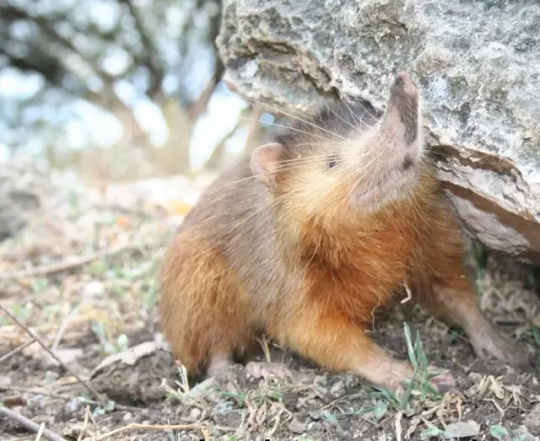
A very rare, nocturnal, shrew-like creature that is one of the few mammals able to produce venom. Look at him! Look at his snout! He's just a little guy! He will bite you and run away on his back legs! He's rare, and endangered, but not gone! Not gone yet, bitches!
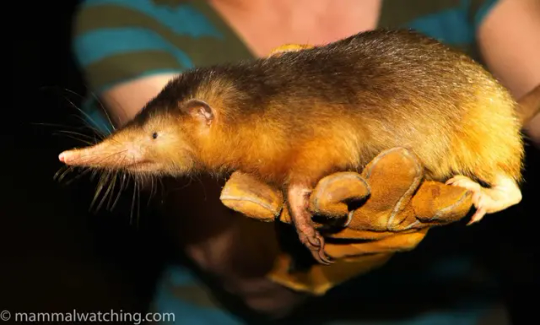
(Bonus: 10 Fun Facts About the Solenodon)
Today’s Bizarre Mystery (no, seriously, wtf?):
The Great Unconformity.
Hey, remember the Grand Canyon? Remember how we can see the passage of time through each layer, going back hundreds of thousands of years?

Did you know that apparently, on this massive record of earth's geological history, there's a chunk of time missing? Science has some hypotheses about how and why this happens (and yes, it's been found in more than one place), but they are really only hypotheses, and no one's really sure what happened to, oh, 1.6 billion years, give or take.
Today’s Act of Humanity (yes, we are worth the effort):
After fleeing a war, Ukrainians rush to help Mississippi tornado victims.

"They made the 16-hour drive south to donate bottled water and volunteer with aid workers, buoyed by the idea that they could help a community facing a similar struggle to theirs.
“We had to leave our home,” Pavliuk told The Washington Post in Ukrainian, in an interview interpreted by Hrebenyk. “And they don’t have a place to go back, either.”"
NEW CATEGORY:
Today's Good News About The Future (No, It's Not Too Late and Anyone Who Says Otherwise is Selling Something):
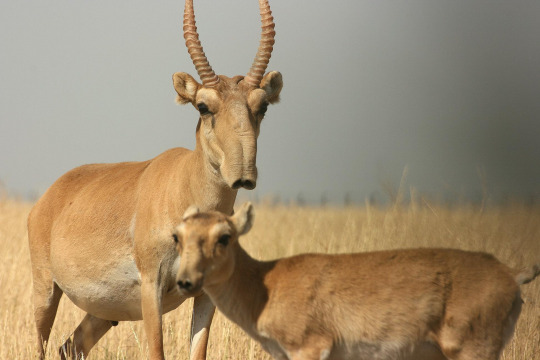
The Saiga Antelope, a species critical to the continued survival of huge swathes of grassland, that in 2003 was down to 6% of it's population and already extinct in it's natural habitat of China and Ukraine, has rebounded back to almost 2 million strong thanks to conservation efforts.

Previous | Next
#the world is amazing#planet earth#nature#good news#animals#danakil depression#Ouarzazate Solar Power Station#morocco#Hispaniolan Solenodon#little creature#saiga antelope#climate change#climate conservation#hope#ukraine immigrants#people are okay#mississippi tornado#look for the helpers#I'm so tired of being worried about the world#but it's not all bad
262 notes
·
View notes
Text

362 notes
·
View notes
Text
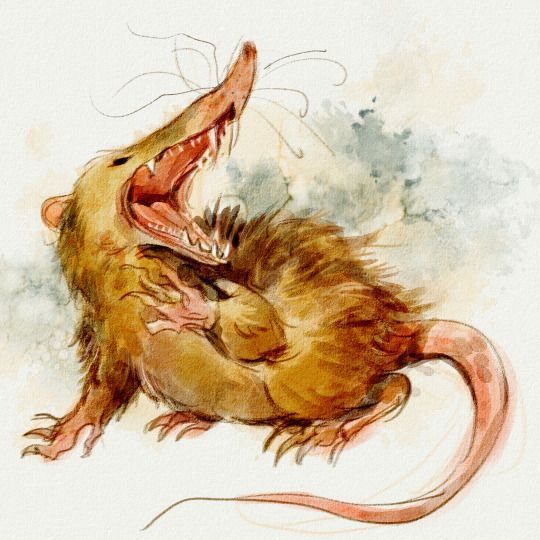
Agouta! Or Solenodon?
I like their long snout! They're pretty cute when they're not hissing or angry. I can't believe they're a primitive form of insectivores, maybe even prehistoric!
238 notes
·
View notes
Photo
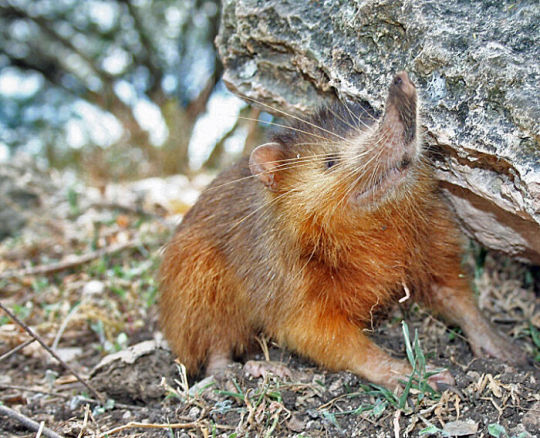
Rarest Animals In The World That Are On The Brink Of Extinction
Hispaniolan Solenodon (Solenodon Paradoxus)
Wikimedia Commons
#wikimedia commons#photographer#hispaniolan solenodon#solenodon paradoxus#animal#mammal#wildlife#nature#extinction#least concern
84 notes
·
View notes
Text

Hispaniolan Solenodon (Solenodon paradoxus), family Solenodontidae, order Eulipotyphla, found on the Caribbean island of Hispaniola (Haiti and Dominican Republic)
This nocturnal insectivorous mammal is venomous.
They are in the same order as moles, hedgehogs, and shrews.
photograph by Pedro Genaro Rodriguez
367 notes
·
View notes
Text

Hispaniolan solenodon
By: André Bert/Jacana Press Agency
From: Éditions Rencontre Cards
1975
57 notes
·
View notes
Text
Animal of the Day!
Hispaniolan Solenodon (Solenodon paradoxus)

(Photo by Miguel Landestoy)
Conservation Status- Endangered
Habitat- Hispaniola Island
Size (Weight/Length)- 907 g; 30.4 cm
Diet- Insects; Mice; Reptiles; Fruit; Worms
Cool Facts- Native to only one island, the Hispaniolan solenodon is an extremely unique animal. Fur covers the majority of their body, with their feet and tail being naked. Being one of the few venomous mammals, the Hispaniolan solenodon is an excellent hunter. Their long snout is used to dig through leaflitter to search for prey. They are nocturnal and spend their days sleeping in burrows or hollow logs. This species of solenodon are relatively slow and clumsy, most likely because the island of Hispaniola lacked predators until invasive populations of dogs and cats were introduced to the island, resulting in a decline of population for the solenodon. Today, massive conservation efforts have been put in place to save this tiny animal.
Rating- 13/10 (Small. Deadly. Oddly cute.)
#Animal of the day#Animals#Mammals#Tuesday#November 30#Hispaniolan solenodon#biology#science#conservation#the more you know
170 notes
·
View notes
Photo

Endangered Inktober - Hispaniolan Solenodon by Ciameth
Day 18 - Hispaniolan Solenodon, Solenodon paradoxus
IUCN Status: Endangered
Solenodons are a unique group of venomous, nocturnal, insectivorous mammals. They diverged from other modern mammal lineages around 73 million years ago, existed alongside dinosaurs, and survived the K-T extinction event at the end of the Cretaceous. Today, two species of Solenodon remain - the Hispaniolan Solenodon, found only on Hispaniola, and the Cuban Solenodon, found only on Cuba. Both are endangered.
The Hispaniolan Solenodon has a long, flexible snout and an incredible sense of smell. They have terrible eyesight and hunt through scent and feel. Unique among mammals, the Solenodons have venomous salivary glands. The venom is injected through grooves on the incisors and used to incapacitate prey.
Unfortunately, the Solenodons are not able to defend themselves against introduced mammalian predators like feral dogs, outdoor cats, rats, and mongooses. They are also trapped for human consumption due to food shortages. The Hispaniolan Solenodon needs more protected habitat, so it has space to thrive away from human habitation, and invasive species on the island need to be eradicated or controlled.
7 notes
·
View notes
Photo

Hispaniolan solenodon (Solenodon paradoxus)
Photo by Miguel A. Landestoy T.
#cuban solenodon#solenodon paradoxus#solenodon#solenodontidae#eulipotyphla#laurasiatheria#boreoeutheria#eutheria#mammalia#tetrapoda#vertebrata#chordata
229 notes
·
View notes
Text
Solenodons
Solenodons have unusually flexible snouts. The Hispaniolan solendon has a ball-and-socket joint at the base of its snout, similar to a human shoulder joint. This increases its mobility and allows it to use its snout to explore narrow crevices for potential prey.
#solenodon#solenodons#animal#animals#animal fact#animal facts#fun animal fact#fun animal facts#fun fact#fun facts#fact#facts#zoology#got my first covid shot today :D
22 notes
·
View notes
Photo




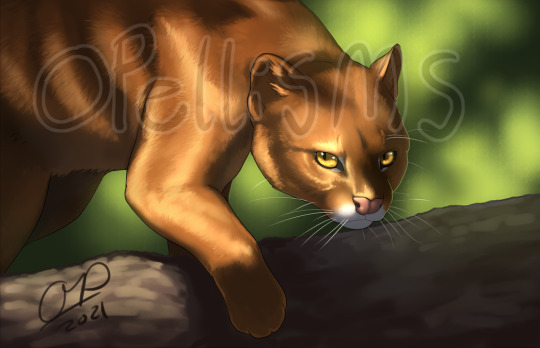


More March Mammal Madness artwork, these are from the Tricksy Taxonomy division!
-Malagasy striped civet (AKA fanaloka) round 1
-Mara (AKA Patagonian cavy) round 1
-Jaguarundi round 1 & 2
-Red wolf round 1 & 2
-Hispaniolan solenodon round 2
#art#my art#2021mmm#solenodon#hispanolan solenodon#red wolf#fanaloka#malagasy striped civet#jaguarundi#mara#patagonian cavy#March Mammal Madness
33 notes
·
View notes
Photo

The endangered Hispaniolan solenodon, endemic to Haiti in the island of Hispaniola.
1 note
·
View note
Link
Solenodons (meaning "slotted-tooth") are venomous, nocturnal, burrowing, insectivorous mammals belonging to the family Solenodontidae. The two living solenodon species are the Cuban solenodon (Solenodon cubanus), and the Hispaniolan solenodon (Solenodon paradoxus). Both species are classified as "Endangered" due to habitat destruction and predation by non-native cats, dogs and mongooses, introduced by humans to the solenodons' home islands to control snakes and rodents.
3 notes
·
View notes
Photo

Save the polar bears, of course … but it’s the solenodons we really need to worry about | The Guardian
Solenodons are some of Earth’s strangest creatures. Venomous, nocturnal and insectivorous, they secrete toxins through their front teeth – an unusual habit for a mammal. More to the point, the planet’s two remaining species – the Cuban and the Hispaniolan solenodon, both highly endangered – have endured, virtually unchanged, for the past 76 million years. Other related species have become extinct.
And that makes solenodons very important, according to Professor Sam Turvey, of the Zoological Society of London. “They are the last fruits on an entire branch of the tree of evolution,” said Turvey, who was last month awarded one of the most prestigious awards in zoology, the Linnean medal, for his work on evolution and human impacts on wildlife. “There are no close counterparts to solenodons left on Earth, yet they have been on the planet since the time of the dinosaurs.”
Solenodons have been brought close to extinction by the mongoose, the carnivore introduced to their native islands to kill snakes and rodents. They are classic examples of an “Edge” – evolutionary distinct and globally endangered – species. This means they have no close relatives and represent our last chances to preserve entire branches or trunks of the evolutionary tree.
Other examples include the critically endangered vaquita, a species of porpoise from the Gulf of California, and the Sumatran rhino. “A lot of attention is paid to other threatened rhino species,” said Turvey, “but the Sumatran, which is down to only a few dozen survivors, is the only woolly rhino left on the planet. It is special.”
These animals stand in contrast with other threatened species which have close relatives that fill similar ecological niches. The polar bear, for example, is closely related to the grizzly. Should the former die out, the latter could provide a fair amount of genetic substitution, say scientists. By contrast, there is no species that could do the same for solenodons.
Another example is provided by the gibbons of Asia. Most species are now endangered, with some, such as the Hainan gibbon, facing imminent extinction. Yet gibbons were once widespread and common. “In the tombs of ancient Chinese emperors,” said Turvey, “we have discovered bones of gibbons, kept as high-status pets, from species previously unknown to science. Over millennia, we have lost countless species, and entire genera, of gibbons in Asia.”
26 notes
·
View notes
Text
Ahhhh! Thank you😁❤️❤️❤️❤️
SOLENODON
After many years of research on a genetically and geographically isolated and highly endangered mammal, an international team of scientists managed to sequence the Solenodon genome, and the results are surprising. “The solenodon lineage diverged from other placental mammals circa 78 million years ago. That means [it] has existed since the Cretaceous period,” said Adam Brandt, lead author of a recent study that took the first look at the solenodon’s mitochondrial DNA.
Solenodons are large, plump shrews with elongated snouts and multicolored fur. They grow to about a foot long, and their naked, scaly tails can add another 10 inches. They are some of the most unique and rare mammals in the world, today they are only found on the islands of Cuba and Hispaniola.
The Hispaniolan solenodon is one of the most unusual mammals on the planet.
The two living solenodon species are the Cuban solenodon (Solenodon cubansus) and the larger Hispaniolan solenodon (Solenodon paradoxus). As other physical traits are concerned, solenodons are larger than the shrews they resemble, measuring between 11 and 13 inches (28–33 cm), with the tail adding an additional 10 inches (25 cm), and a weight going up to 2.2 pounds (1 kg).
The Hispaniolan solendon has a ball-and-socket joint at the base of its snout, similar to a human shoulder joint. This increases its mobility and allows it to use its snout to explore narrow crevices for potential prey.
Solenodons find food by rooting in the ground with their snouts and tearing into rotten logs and trees with their powerful foreclaws. Their diet consists mostly of insects, worms, and other invertebrates, but they also feed on fruits, roots, vegetables, and small vertebrates. In captivity, solendons have been known to drink only while bathing.
They’re venomous and are one of only a few venomous mammals. Other venomous mammals, like the duck-billed platypus, are only capable of passively conveying venom; the solenodon actually injects its venom like a snake through specially modified teeth. The second lower incisors have special grooves through which venom flows. In fact, the name “solenodon” is derived from the Greek for “grooved tooth.”
Solenodons have glands in their armpits and groins that secrete what is said to be a musky, goat-like odor. They sleep the day away in burrows. They’re nocturnal, hiding during the day in burrows, caves, or hollowed out logs. They grunt like pigs when they feel threatened, and also make bird-like cries.
Solenodons depend on senses other than sight, because they have tiny eyes and poor vision, but they possess highly developed senses of hearing, touch, and smell. Solenodon nipples are located near their rumps. The female solenodon gives birth to one to three young at a time, but only two will survive. She only has two nipples, and they’re located toward her back, almost on her buttocks. Young solenodons stay with their mothers for several months, which is long compared with other insectivores.
Solenodons have a funny way of getting around, they have a clumsy gait and are incapable of jumping, although they can run and climb surprisingly fast. When they run, they do so on their toes, going in a zig-zagged course. When alarmed, they might trip over their own toes and even tumble head-over-heels.
They’re easy prey for introduced predators. Because of their ungainly gait, solenodons have made easy picking for introduced predators such as cats, dogs, and mongooses. They have also been observed to stop, sit still, and hide their heads when predators pursue them.
11 notes
·
View notes